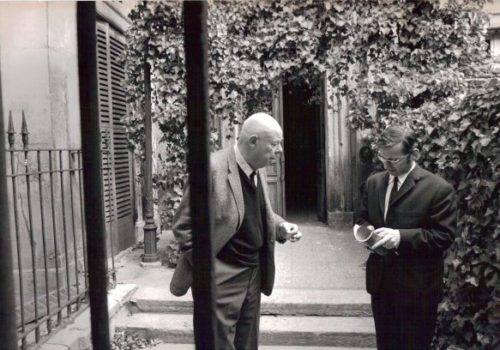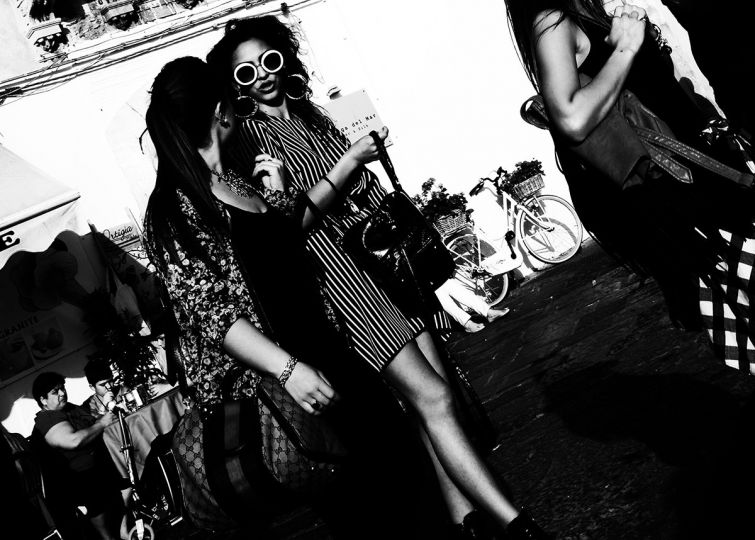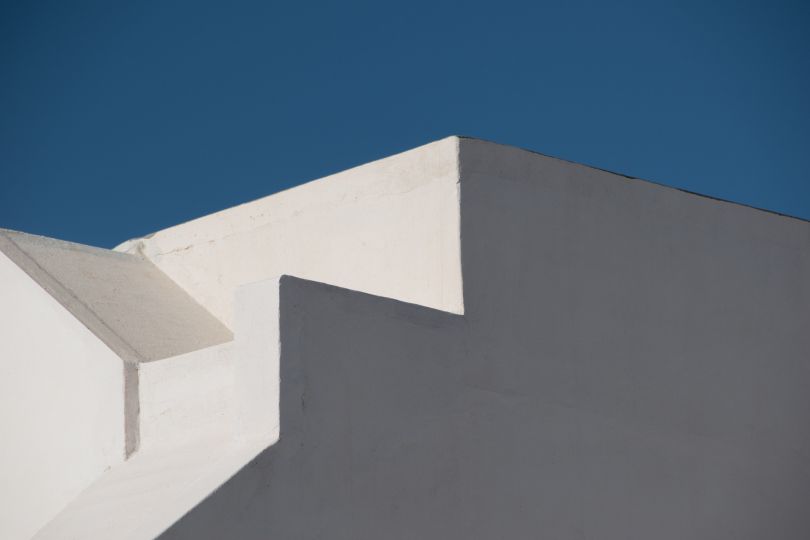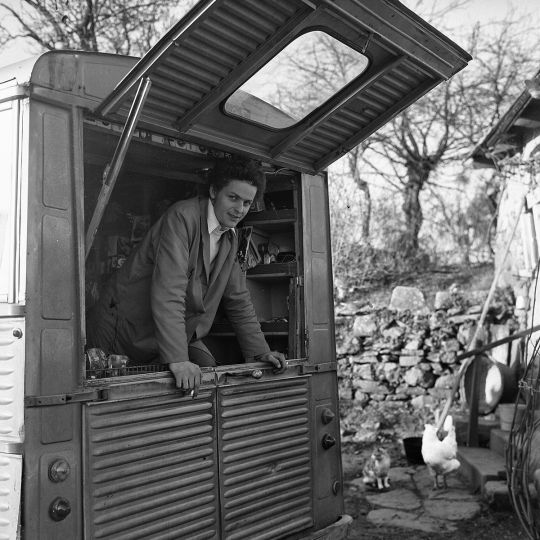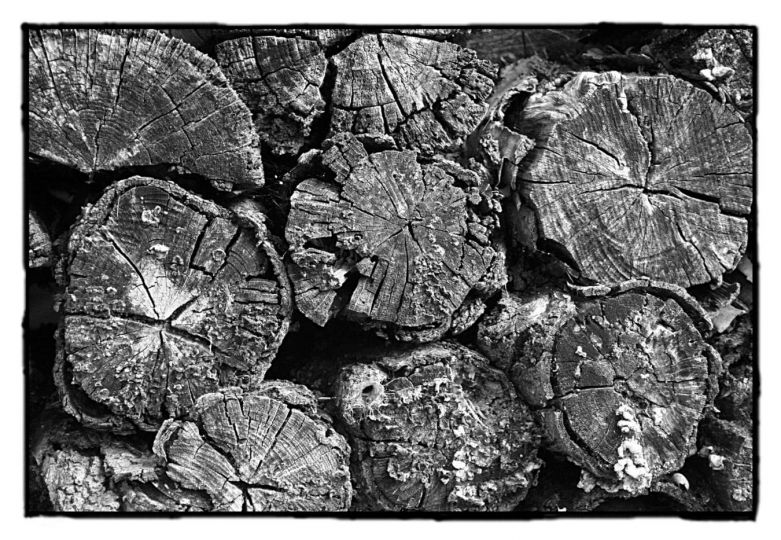#4 – The sixties, the peak of the Reporters Associés
Paris is the center of the world! Like a spider’s web, the airlines depart from Orly’s new airport and served all continents. So that’s where the news agencies should be. Dixit de Vaysse!
This is how he explains his success when I asked him why American newspapers worked so much with French photographers. And besides, it’s not just the Americans, the agency worked for all the major magazines in Europe. I especially think that the quality of the work, the pugnacity of the photographers of the French agencies have a lot to do with it.
You have to be the best and the fastest to produce and sell the reports. It should not be forgotten that at that time, the major magazines all had teams of salaried and freelance photographers. It is the same in laboratories.
From 1960, Associated Reporters covered all major events. It’s the time when Paris Match and Jours de France “were fighting each other.” In 1960, Paris Match launched the 35 mm fashion. Leica takes over. No more Rolleiflexes, photographers also had Pentax, and then Canon and Nikon, which will quickly bury the 6×6 format.
There will be less and less need to crop photos. The framing will be done directly by the photographers thanks to the change of lens. Besides, photographers don’t really like having their shots cropped.
In the silver age, the word photographer had a meaning. not every one can be a photographer. It all starts with the lab. Until the 1960s, no camera was fully “automatic”, which is why going through the lab taught a lot for shooting. The first photocells appeared in the late 1950s: Zeiss Ikon’s Ikophot.
Previously the photographer judged the setting of the camera in relation to the ambient light and the sensitivity of the film he was using. The value of the photographer was quickly evaluated! The quality of his work was knowing how to operate, indoors and outdoors. You had to know how to adjust the camera, diaphragm and speed very quickly.
Magazines, especially Paris Match, have large, dedicated photographic reporters and an efficient laboratory. To sell you have to be better and faster keeps reminding Jean Monteux, the salesman of our reportages.
At the beginning of the sixties, Lova de Vaysse signed a magnificent contract with the large German weekly newspaper Stern. He hired Pierre Menochet to write and enlarged the premises. Lova de Vaysse finally understood that to make quality and speed, in photography you had to equip the agency with modern equipment.
Davis Boyer, who is the tenant on avenue Frochot where the agency lives, agrees to rent another large part of the pavilion: the entire ground floor, the cellar and part of the 1st floor.
We can finally create a modern laboratory, with quality enlargers. The wooden enlarger, the Imperator, which I had found on my arrival was replaced by Durst, Omega, Leica equipment. Bins are installed for image processing. Unfortunately, they are still made of concrete! Two rotary glazers from Vitau were purchased.
The development of the films takes place in 20 liter vertical tanks. I invented a film stirring system in the baths with truck wipers. The development of the films is done at 18 ° centigrade, we will do it at 20 ° to speed up the process. In cases of absolute emergency, drying will be done with alcohol. Many minutes were saved.
The format of paper prints changed, Ilford 20×25 is no longer in fashion. I calculate that in proportion to 24×36 the size of the photo paper will be 21×29.7. Kodak produced this format. This special manufacturing finally allows us to print on the back of the photos the name of the agency.
Shortly after these new photo paper formats, Paris Match released the 20×30 cm, we decide with Lova de Vaysse to adopt this simpler format which became classic and was soon used by all the agencies, which suited the company Kodak.
But You must also stamp the photos on the back one by one. We are competing to stamp the fastest … Jean Monteux broke all speed records to be the first on the market.
At the agency, before the arrival of Pierre Menochet, there is no editor or rarely, however the captions are very important. It’s the photographer’s job to write them. At the beginning the lcaptions were typed by Jacqueline de Vaysse on a simple paper then cut and pasted behind the print… Thereafter the texts were mimeographed directly on the photo, with a lot of damage, smudges at beginning. In addition, when the photos fell on top of each other, they were stained .
From 1965, I discovered that small offset machines could print texts and captions directly on the back of photos.
It is not uncommon for each reportage sent to contain between 20 and 30 photos per report made for twenty different countries and which must leave the same evening by plane or train. The texts were succinct but the photos generally speak for themselves.
So far all photos were in black and white. But, here came the color! The film Kodachrome existed but was little used in the press due to a too long development time. You had to send the films either to Germany or to the USA … It could only be used for magazine reports, not for pure news.
Kodak Ektachrome was emerging, it was processed in Paris by two laboratories Central Color and Labo Color. Color shots were mainly reserved for magazine covers. The problem with Ektachrome is that the right photo, the scoop, was unique. How to share the scoop between all the magazines around the world who wanted it right away for before closings! I was studying this problem, you had to succeed in making duplicates, but quality duplicates.
With the professional service of Kodak we tryed to find a solution by contact or by enlargement … But there was too much loss of quality. On tests carried out in Ektachrome 120 the “sharpness” and the contrast increased … Then it was tedious to carry the developments outside to await the result…
The Télos company, then located rue de Clichy in Paris, offered for sale a device capable of developing Ektachrome. Finally ! This device was called the Unitub. With Lova de Vaysse we decide to buy it. I installed a color lab corner. The company P.C. (chemicals) provided the chemistry. This development system is still working well, in any case it still allowed us to save time and make a happy man: Jean Monteux always anxious to arrive first in the newsrooms.
In 1965 Lova de Vaysse followed my advice and we decided to set up a complete color laboratory in the cellar of the pavilion and we started to duplicate all the color reportages.
This opportunity for investment and modernization of the agency was an opportunity for me to expand, buy high-performance equipment and hire. A printer was hired, Maurice Aye, who stayed for four years before being hired as a photographer at the La Hague nuclear power plant.
Thereafter there will be Gérard Lamade, a comrade from Aeronautics, then Gilbert Regazzi, a very good press printer, courageous, but problematic… He was hanging out a bit too much in tobacco bars and I could not always count on him. Later he worked for Gamma.
Meanwhile Lova de Vaysse bought himself a country house in Blaru in Lower Normandy near Mantes-la-Jolie, it was a beautiful little Norman thatched cottage surrounded by a large plot. He went there very often on weekends. And he trusted us to run the agency without his presence. Pierre Menochet gave a lot of his time …
It was also the time when Jean Desaunois arrived with his exclusive reports on the royal family of Iran. They sold all over the world and brought in a lot of foreign currency to the agency … But it was not always paid “right away” … Maybe he voluntarily let things run, until Lova de Vaysse sold him shares in the company. So everything went back to normal.
With Jean Desaunois, the Reporters Associés covered more and more princely events. He was more and more present and began to impose his way of working.
This article first appeared on the A L’OEIL – Journalism & Photography website : http://www.a-l-oeil.info/blog/

